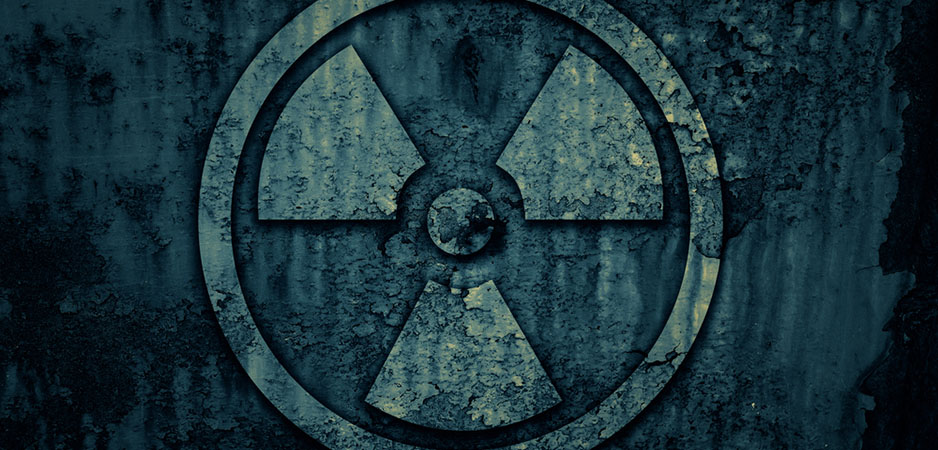Russia is no longer communist and has never threatened war. But for the US, the Russians are the evil enemy against whom we must arm.
The president of the United States and his generals are in need of a fix called low-yield weapons. Air Force General John Hyten made the logic clear: “That capability is a deterrence weapon to respond to the threat that Russia, in particular, is portraying.”
Here is today’s 3D definition:
Low-yield:
Of modest size, achieving limited effect and, therefore, essentially harmless. When applied to nuclear weapons, the limited effect would not surpass the destruction of Hiroshima or Nagasaki.
Contextual note
In a cogent commentary on the problem of low-yield nuclear weapons, the University of Texas review, War on the Rocks, analyzes the motivation and the risk of this approach: “So why … call for additional low-yield options? In a word: Russia. The administration’s basic concern is that Russia may try to use a low-yield nuclear weapon on American or allied forces without the United States being able to successfully respond in kind.”
Analyzing the strategic logic used to justify low-yield capacity, the author, Vipin Narang, reveals the type of amateur chess game thinking that lies behind the US nuclear strategy: “[I]t is simply unrealistic to base a whole strategy on hoping that an adversary assumes the best-case scenario.”
The National Interest develops a similar argument against Donald Trump’s initiative and baldly states, “There is simply no such thing as limited nuclear war, and preparing for one is folly.” Taking on the amateur chess player’s reliance on imaginary mind-reading techniques, it mocks the US strategy: “Moscow ‘apparently’ thinks something so we need to spend millions of dollars and risk nuclear war to respond? This is senseless and dangerous.”
Historical note
Everyone knows the short history of the nuclear age. The first atomic bomb — originally developed, at the urging of Albert Einstein, to counter Nazi Germany’s nuclear research during World War II — was used with literally devastating “success” twice against Japan to end the war in the Pacific. In other words, nuclear capacity was initially justified as a necessary weapon against the pure evil of the Nazi regime. As soon as it had been put to use in Japan, many people, including Einstein, considered its creation “a great mistake.”
With the world at peace after 1945, Americans either discovered or invented a new source of pure evil: communism. This perception of a virtuous combat against a metaphysical force (the communist ideology) justified the continuing investment in nuclear weapons. It gave us the Cold War, which in turn gave us an exciting new geopolitical chess game: mutually assured destruction (MAD). The reasoning was so compelling that it drove Stanley Kubrick to produce Dr. Strangelove with, at its core, the truly mad, but totally realistic logic of a “doomsday machine.” This sequence from the 1964 film is a stunning example of the “logical” processes still at work in formulating US nuclear strategy.
 As president, Ronald Reagan emphasized that the nuclear capacity of the US was directed not in opposition to other nations, but to what in 1983 he called the “evil empire.” Everyone knew that communism was not just a political theory, but an evil ideology because it denied the freedom of capitalism. The words were barely out of the actor-president’s mouth when the evil empire imploded. With the fall of the Berlin Wall, under George H.W. Bush and Bill Clinton, the Soviet Union was dissolved, losing its satellites and buffer states, and Russia instantly became a free-for-all capitalist paradise. The threat that kept the Cold War going had suddenly disappeared.
As president, Ronald Reagan emphasized that the nuclear capacity of the US was directed not in opposition to other nations, but to what in 1983 he called the “evil empire.” Everyone knew that communism was not just a political theory, but an evil ideology because it denied the freedom of capitalism. The words were barely out of the actor-president’s mouth when the evil empire imploded. With the fall of the Berlin Wall, under George H.W. Bush and Bill Clinton, the Soviet Union was dissolved, losing its satellites and buffer states, and Russia instantly became a free-for-all capitalist paradise. The threat that kept the Cold War going had suddenly disappeared.
In 2001, an evil force returned as al-Qaeda proved its capacity to play the role of the evil enemy. But it was neither a nation nor did it have any nuclear capacity. Then there was the threat of Iran, but that was eventually neutralized. And of course, North Korea was clearly evil, but not an empire.
And so the political class has revived the idea of Russia as the enemy, albeit without communism. As authors of the tragedy of history, Democrats and Republicans seem to agree that if you can’t have a clearly evil, cold-blooded assassin like hump-backed Richard III, then you need an Iago, who doesn’t seem to be evil to his Venetian compatriots, but we in the audience know that he is.
And so, although it isn’t communist and has never threatened war, Russia — or rather Vladimir Putin — is the evil enemy against whom we must arm. The reasoning is limpid. If the Russians could play the role in the 1950s, they should still have the acting skills to play it in 2018.
The question is: Are we still in Act I or have we moved on to Act V?
*[In the age of Oscar Wilde and Mark Twain, another American wit, the journalist Ambrose Bierce, produced a series of satirical definitions of commonly used terms, throwing light on their hidden meanings in real discourse. Bierce eventually collected and published them as a book, The Devil’s Dictionary, in 1911. We have shamelessly appropriated his title in the interest of continuing his wholesome pedagogical effort to enlighten generations of readers of the news.]
The views expressed in this article are the author’s own and do not necessarily reflect Fair Observer’s editorial policy.
Photo Credit: Maksym Bondarenko / Shutterstock.com
Support Fair Observer
We rely on your support for our independence, diversity and quality.
For more than 10 years, Fair Observer has been free, fair and independent. No billionaire owns us, no advertisers control us. We are a reader-supported nonprofit. Unlike many other publications, we keep our content free for readers regardless of where they live or whether they can afford to pay. We have no paywalls and no ads.
In the post-truth era of fake news, echo chambers and filter bubbles, we publish a plurality of perspectives from around the world. Anyone can publish with us, but everyone goes through a rigorous editorial process. So, you get fact-checked, well-reasoned content instead of noise.
We publish 3,000+ voices from 90+ countries. We also conduct education and training programs
on subjects ranging from digital media and journalism to writing and critical thinking. This
doesn’t come cheap. Servers, editors, trainers and web developers cost
money.
Please consider supporting us on a regular basis as a recurring donor or a
sustaining member.
Will you support FO’s journalism?
We rely on your support for our independence, diversity and quality.








Commenting Guidelines
Please read our commenting guidelines before commenting.
1. Be Respectful: Please be polite to the author. Avoid hostility. The whole point of Fair Observer is openness to different perspectives from perspectives from around the world.
2. Comment Thoughtfully: Please be relevant and constructive. We do not allow personal attacks, disinformation or trolling. We will remove hate speech or incitement.
3. Contribute Usefully: Add something of value — a point of view, an argument, a personal experience or a relevant link if you are citing statistics and key facts.
Please agree to the guidelines before proceeding.